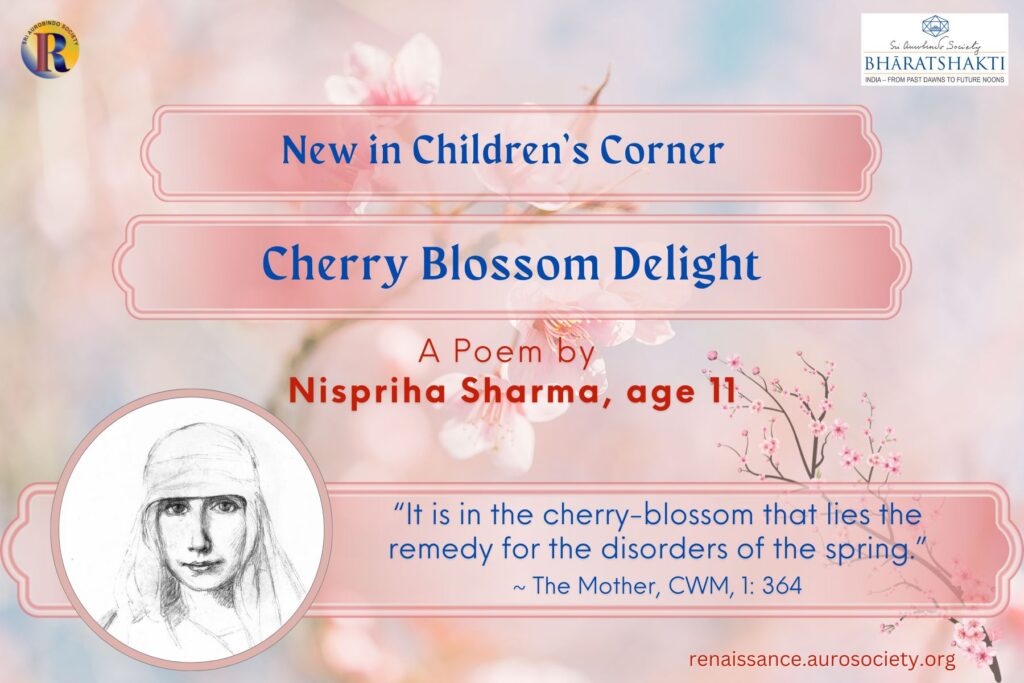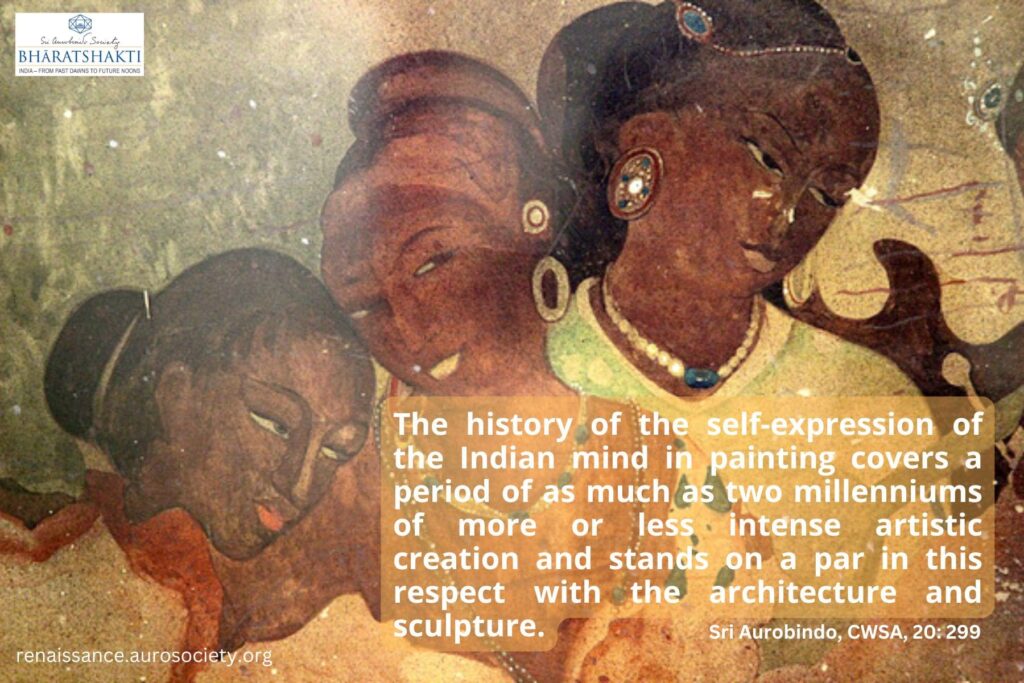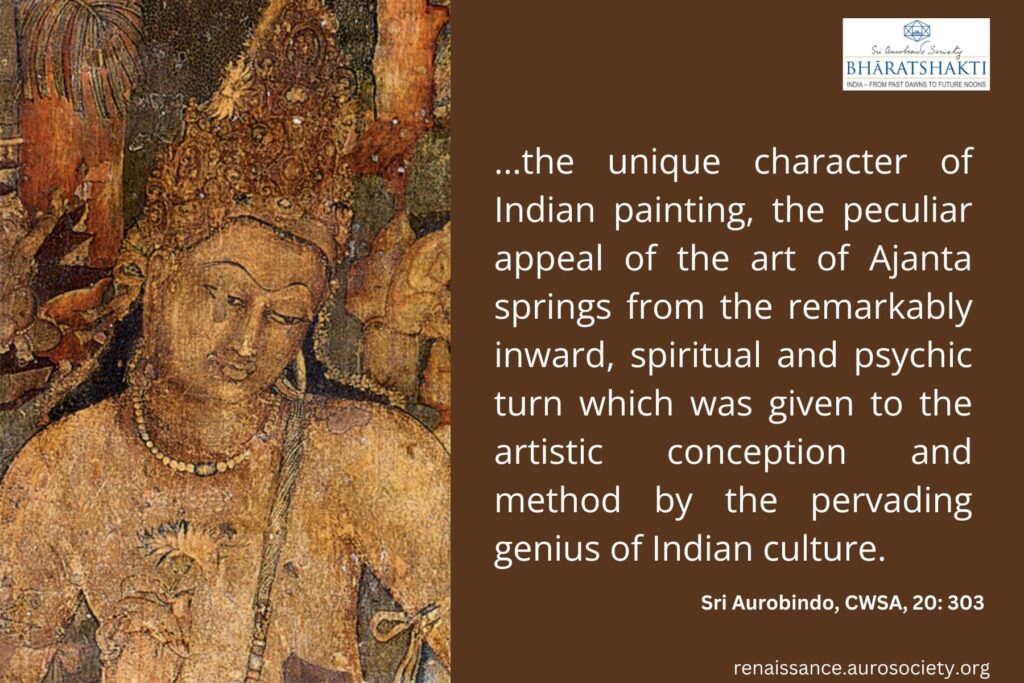Editor’s note: In ‘The Synthesis of Yoga‘ Sri Aurobindo describes in great detail the different levels of consciousness through which we understand and experience the working of Shakti or Energy within and around us. For this digital presentation, we have made slight modifications in the formatting, with no change in the text. We have also added some sub-headings for ease of virtual reading, and present it in 2 parts.

PART 1
. . . In the spiritual truth of our being the power which we call Nature is the power of being, consciousness and will and therefore the power of self-expression and self-creation of the self, soul or Purusha. But to our ordinary mind in the ignorance and to its experience of things the force of Prakriti has a different appearance.
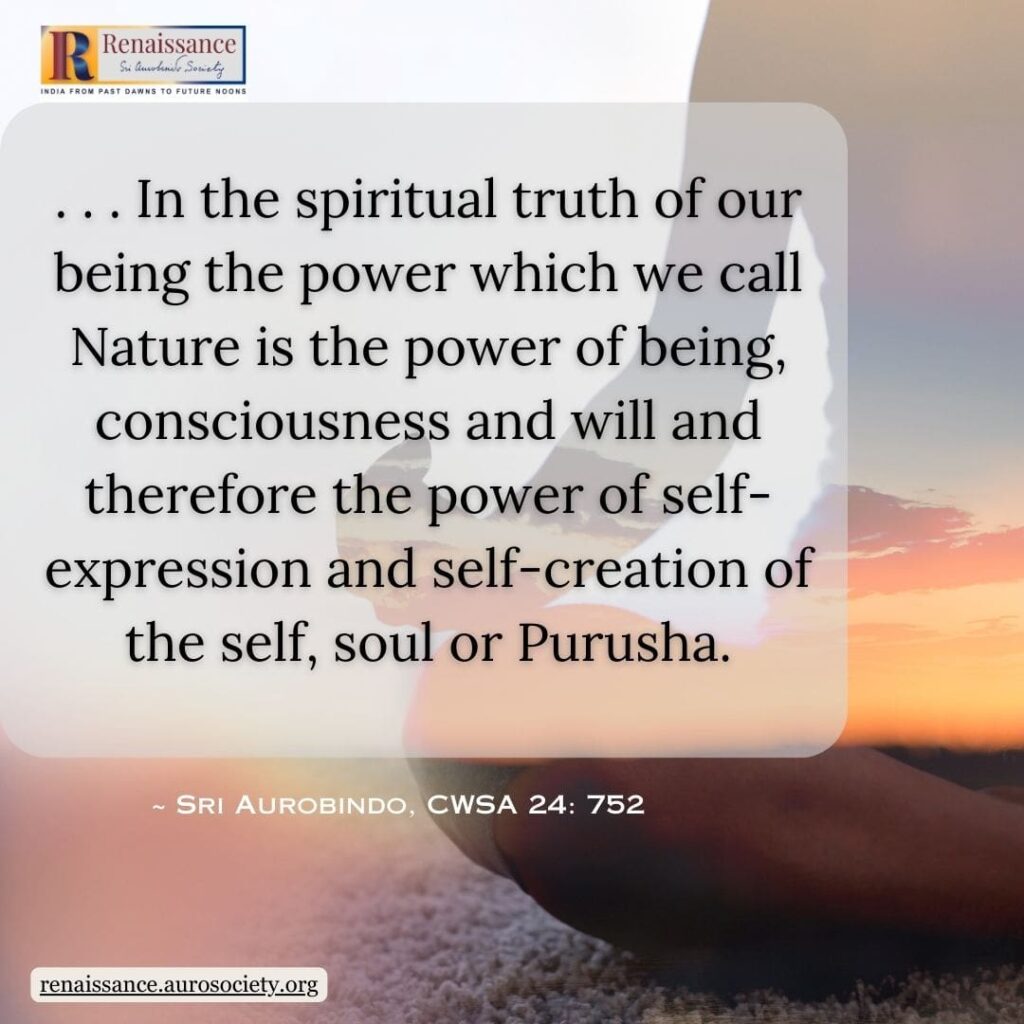
Prakriti – a mechanical energy?
When we look at it in its universal action outside ourselves, we see it first as a mechanical energy in the cosmos which acts upon matter or in its own created forms of matter. In matter it evolves powers and processes of life and in living matter powers and processes of mind. Throughout its operations it acts by fixed laws and in each kind of created thing displays varying properties of energy and laws of process which give its character to the genus or species and again in the individual develops without infringing the law of the kind minor characteristics and variations of a considerable consequence.
It is this mechanical appearance of Prakriti which has preoccupied the modern scientific mind and made for it its whole view of Nature, and so much so that science still hopes and labours with a very small amount of success to explain all phenomena of life by laws of matter and all phenomena of mind by laws of living matter. Here soul or spirit has no place and nature cannot be regarded as power of spirit.
Since the whole of our existence is mechanical, physical and bounded by the biological phenomenon of a brief living consciousness and man is a creature and instrument of material energy, the spiritual self-evolution of Yoga can be only a delusion, hallucination, abnormal state of mind or self-hypnosis. In any case it cannot be what it represents itself to be, a discovery of the eternal truth of our being and a passing above the limited truth of the mental, vital and physical to the full truth of our spiritual nature.
Subjective experience of man
But when we look, not at external mechanical Nature to the exclusion of our personality, but at the inner subjective experience of man the mental being, our nature takes to us a quite different appearance.
We may believe intellectually in a purely mechanical view even of our subjective existence, but we cannot act upon it or make it quite real to our self-experience. For we are conscious of an I which does not seem identical with our nature, but capable of a standing back from it, of a detached observation and criticism and creative use of it, and of a will which we naturally think of as a free will; and even if this be a delusion, we are still obliged in practice to act as if we were responsible mental beings capable of a free choice of our actions, able to use or misuse and to turn to higher or lower ends our nature.
And even we seem to be struggling both with our environmental and with our own present nature and striving to get mastery over a world which imposes itself on and masters us and at the same time to become something more than we now are.
But the difficulty is that we are only in command, if at all, over a small part of ourselves, the rest is subconscient or subliminal and beyond our control, our will acts only in a small selection of our activities; the most is a process of mechanism and habit and we must strive constantly with ourselves and surrounding circumstances to make the least advance or self-amelioration.
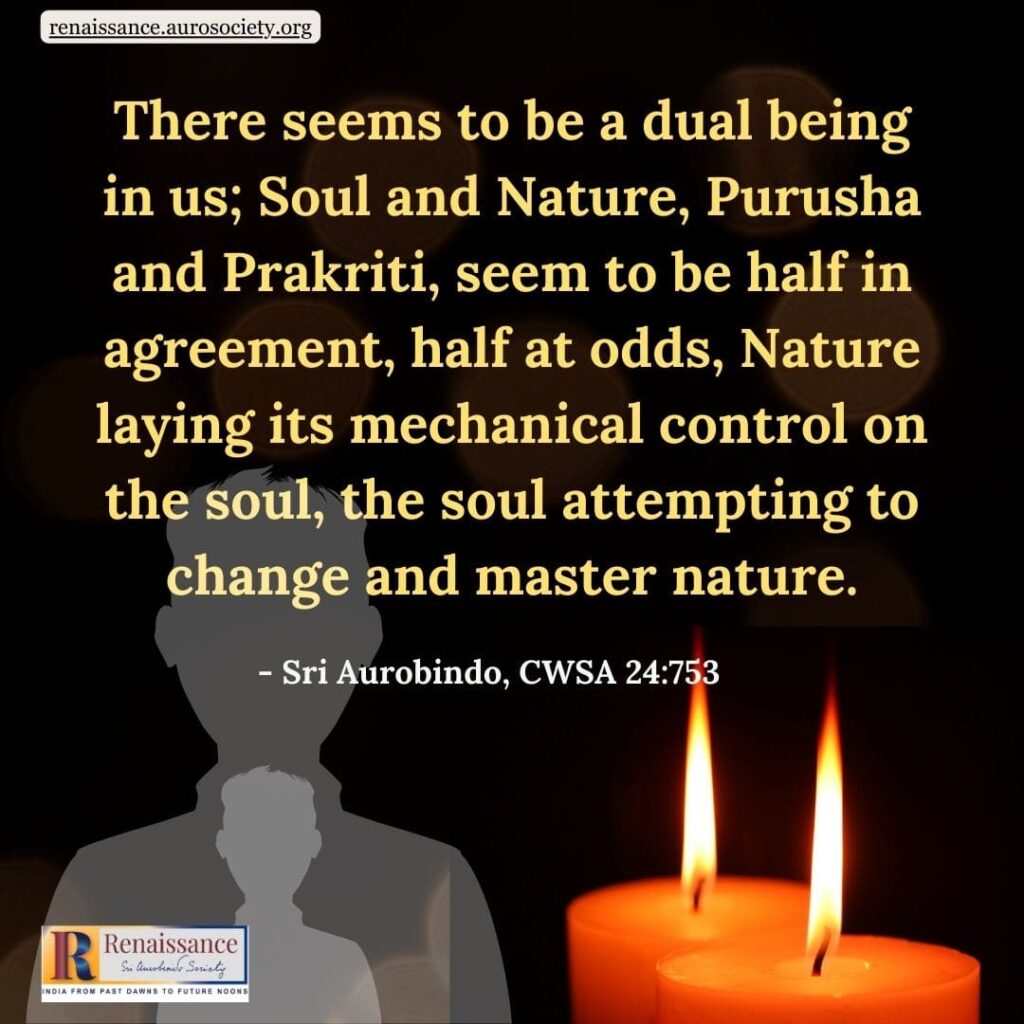
The dual being in us
There seems to be a dual being in us; Soul and Nature, Purusha and Prakriti, seem to be half in agreement, half at odds, Nature laying its mechanical control on the soul, the soul attempting to change and master nature.
And the question is what is the fundamental character of this duality and what the issue.
The Sankhya explanation is that our present existence is governed by a dual principle. Prakriti is inert without the contact of Purusha, acts only by a junction with it and then too by the fixed mechanism of her instruments and qualities; Purusha, passive and free apart from Prakriti, becomes by contact with her and sanction to her works subject to this mechanism, lives in her limitation of ego-sense and must get free by withdrawing the sanction and returning to its own proper principle.
Another explanation that tallies with a certain part of our experience is that there is a dual being in us, the animal and material, or more widely the lower nature-bound, and the soul or spiritual being entangled by mind in the material existence or in world-nature, and freedom comes by escape from the entanglement, the soul returning to its native planes or the self or spirit to its pure existence.
The perfection of the soul then is to be found not at all in, but beyond Nature.
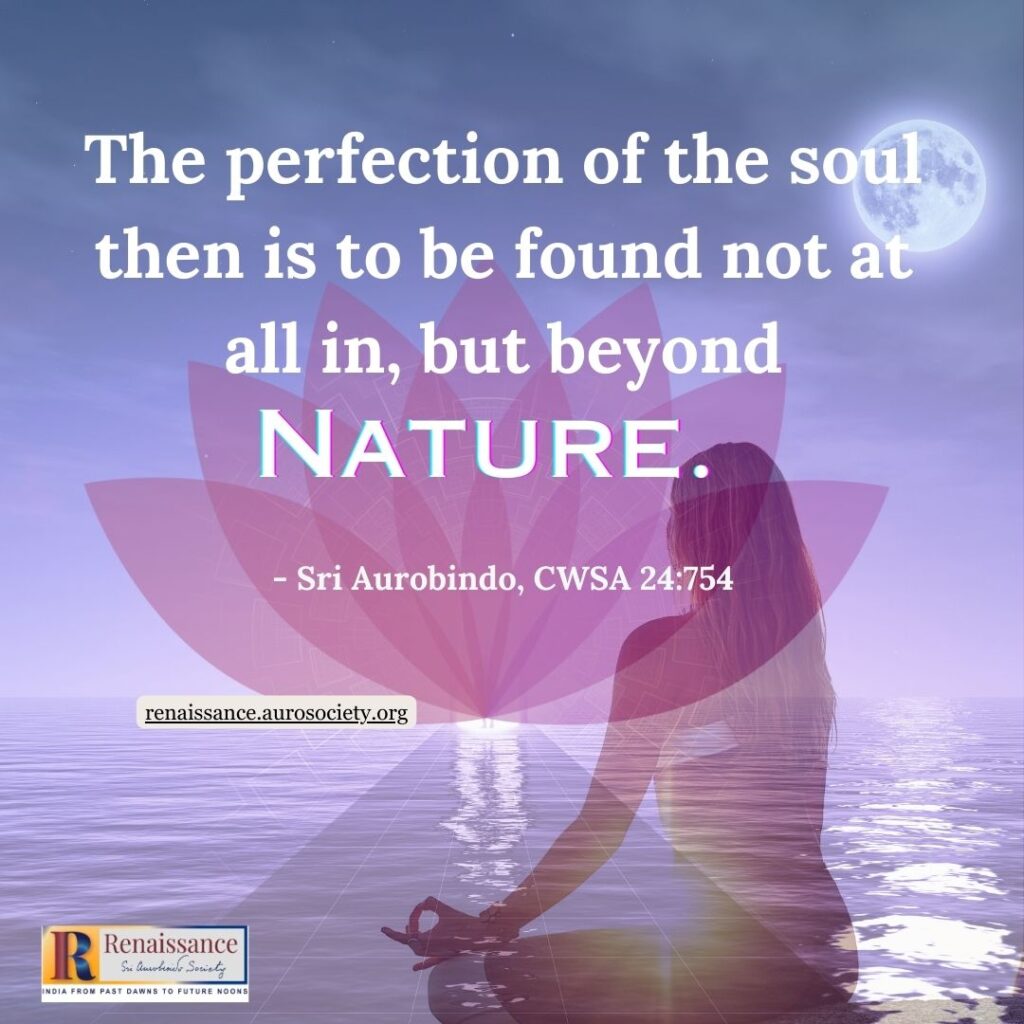
Duality only a phenomenal appearance
But in a higher than our present mental consciousness we find that this duality is only a phenomenal appearance. The highest and real truth of existence is the one Spirit, the supreme Soul, Purushottama, and it is the power of being of this Spirit which manifests itself in all that we experience as universe.
This universal Nature is not a lifeless, inert or unconscious mechanism, but informed in all its movements by the universal Spirit. The mechanism of its process is only an outward appearance and the reality is the Spirit creating or manifesting its own being by its own power of being in all that is in Nature.
Soul and Nature in us too are only a dual appearance of the one existence.
The universal energy acts in us, but the soul limits itself by the ego-sense, lives in a partial and separate experience of her workings, uses only a modicum and a fixed action of her energy for its self-expression. It seems rather to be mastered and used by this energy than to use it, because it identifies itself with the ego-sense which is part of the natural instrumentation and lives in the ego experience.
The ego is in fact driven by the mechanism of Nature of which it is a part and the ego-will is not and cannot be a free will. To arrive at freedom, mastery and perfection we have to get back to the real self and soul within and arrive too thereby at our true relations with our own and with universal nature.
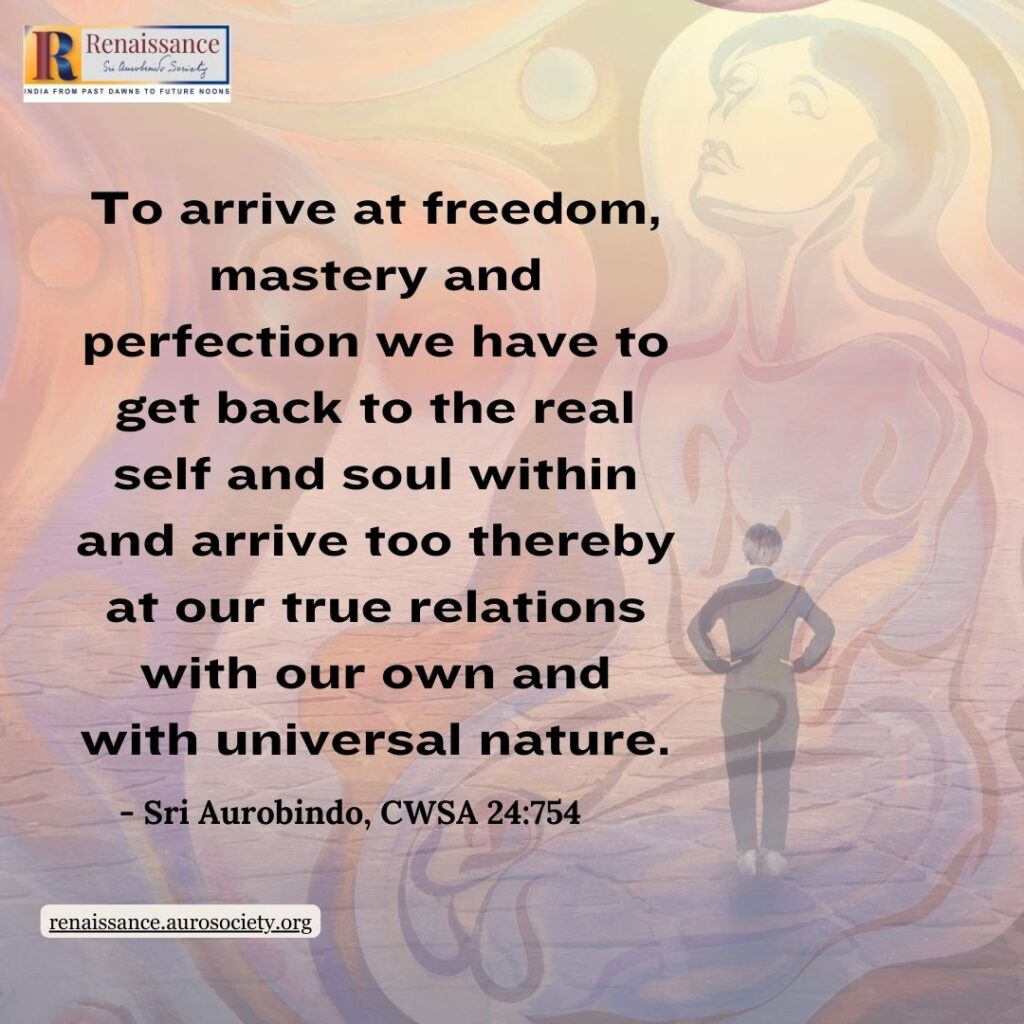
Opening ourselves to the universal energy
In our active being this translates itself into a replacement of our egoistic, our personal, our separatively individual will and energy by a universal and a divine will and energy which determines our action in harmony with the universal action and reveals itself as the direct will and the all-guiding power of the Purushottama.
We replace the inferior action of the limited, ignorant and imperfect personal will and energy in us by the action of the divine Shakti.
To open ourselves to the universal energy is always possible to us, because that is all around us and always flowing into us, it is that which supports and supplies all our inner and outer action and in fact we have no power of our own in any separately individual sense, but only a personal formulation of the one Shakti.
And on the other hand this universal Shakti is within ourselves, concentrated in us, for the whole power of it is present in each individual as in the universe, and there are means and processes by which we can awaken its greater and potentially infinite force and liberate it to its larger workings.
We can become aware of the existence and presence of the universal Shakti in the various forms of her power.
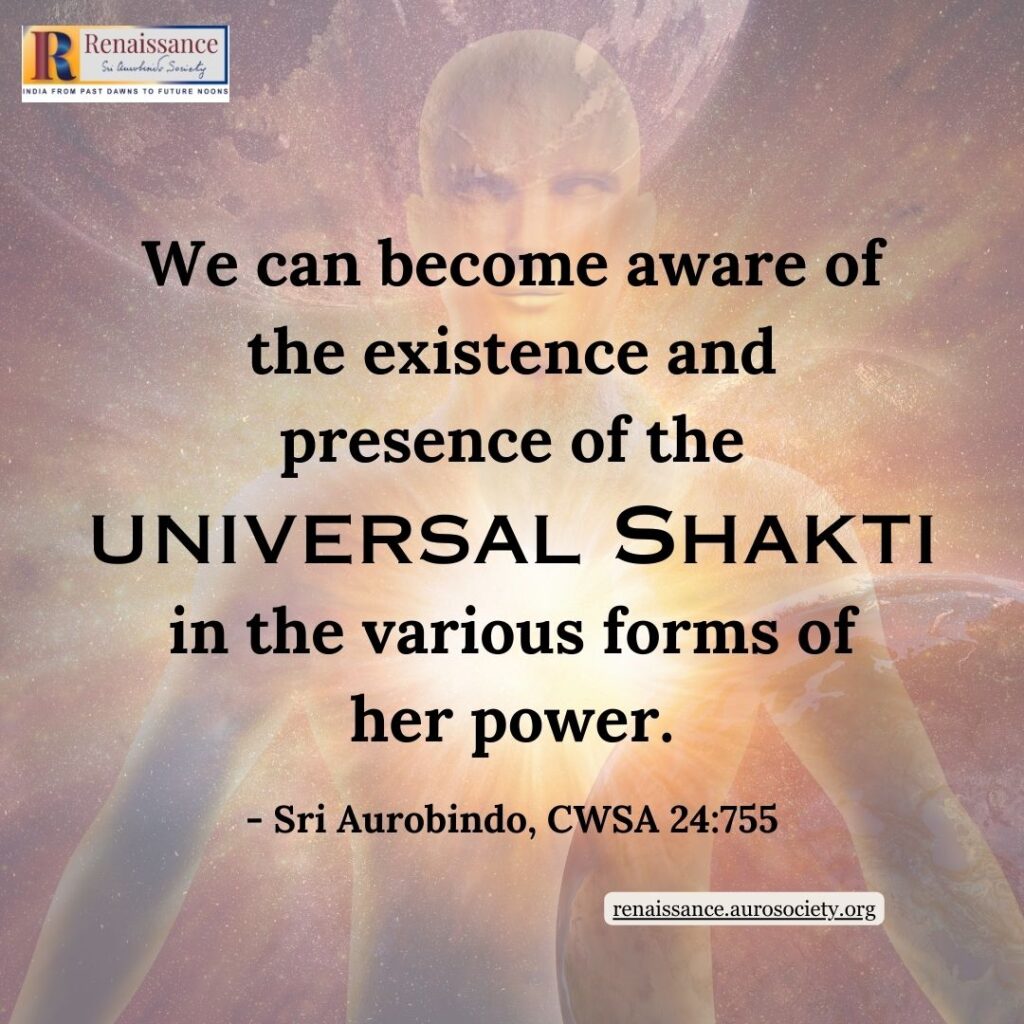
The pranic energy
At present we are conscious only of the power as formulated in our physical mind, nervous being and corporeal case sustaining our various activities. But if we can once get beyond this first formation by some liberation of the hidden, recondite, subliminal parts of our existence by Yoga, we become aware of a greater life force, a pranic Shakti, which supports and fills the body and supplies all the physical and vital activities,—for the physical energy is only a modified form of this force,—and supplies and sustains too from below all our mental action.
This force we feel in ourselves also, but we can feel it too around us and above, one with the same energy in us, and can draw it in and down to aggrandise our normal action or call upon and get it to pour into us.
It is an illimitable ocean of Shakti and will pour as much of itself as we can hold into our being.
This pranic force we can use for any of the activities of life, body or mind with a far greater and effective power than any that we command in our present operations, limited as they are by the physical formula. The use of this pranic power liberates us from that limitation to the extent of our ability to use it in place of the body-bound energy.
It can be used so to direct the prana as to manage more powerfully or to rectify any bodily state or action, as to heal illness or to get rid of fatigue, and to liberate an enormous amount of mental exertion and play of will or knowledge. The exercises of Pranayama are the familiar mechanical means of freeing and getting control of the pranic energy. They heighten too and set free the psychic, mental and spiritual energies which ordinarily depend for their opportunity of action on the pranic force.
But the same thing can be done by mental will and practice or by an increasing opening of ourselves to a higher spiritual power of the Shakti.
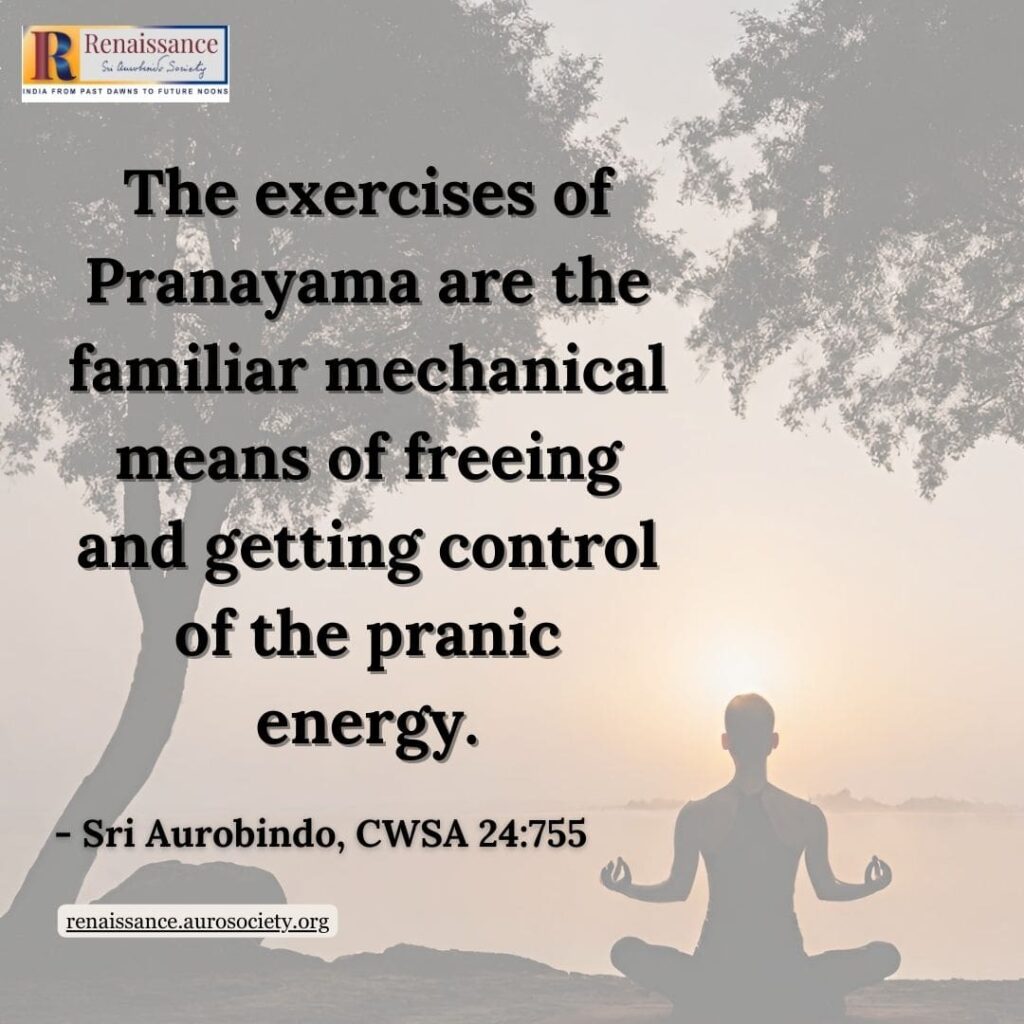
The pranic Shakti can be directed not only upon ourselves, but effectively towards others or on things or happenings for whatever purposes the will dictates. Its effectivity is immense, in itself illimitable, and limited only by defect of the power, purity and universality of the spiritual or other will which is brought to bear upon it; but still, however great and powerful, it is a lower formulation, a link between the mind and body, an instrumental force.
There is a consciousness in it, a presence of the spirit, of which we are aware, but it is encased, involved in and preoccupied with the urge to action. It is not to this action of the Shakti that we can leave the whole burden of our activities; we have either to use its lendings by our own enlightened personal will or else call in a higher guidance; for of itself it will act with greater force, but still according to our imperfect nature and mainly by the drive and direction of the life-power in us and not according to the law of the highest spiritual existence.
Pure mental energy
The ordinary power by which we govern the pranic energy is that of the embodied mind. But when we get clear above the physical mind, we can get too above the pranic force to the consciousness of a pure mental energy which is a higher formulation of the Shakti.
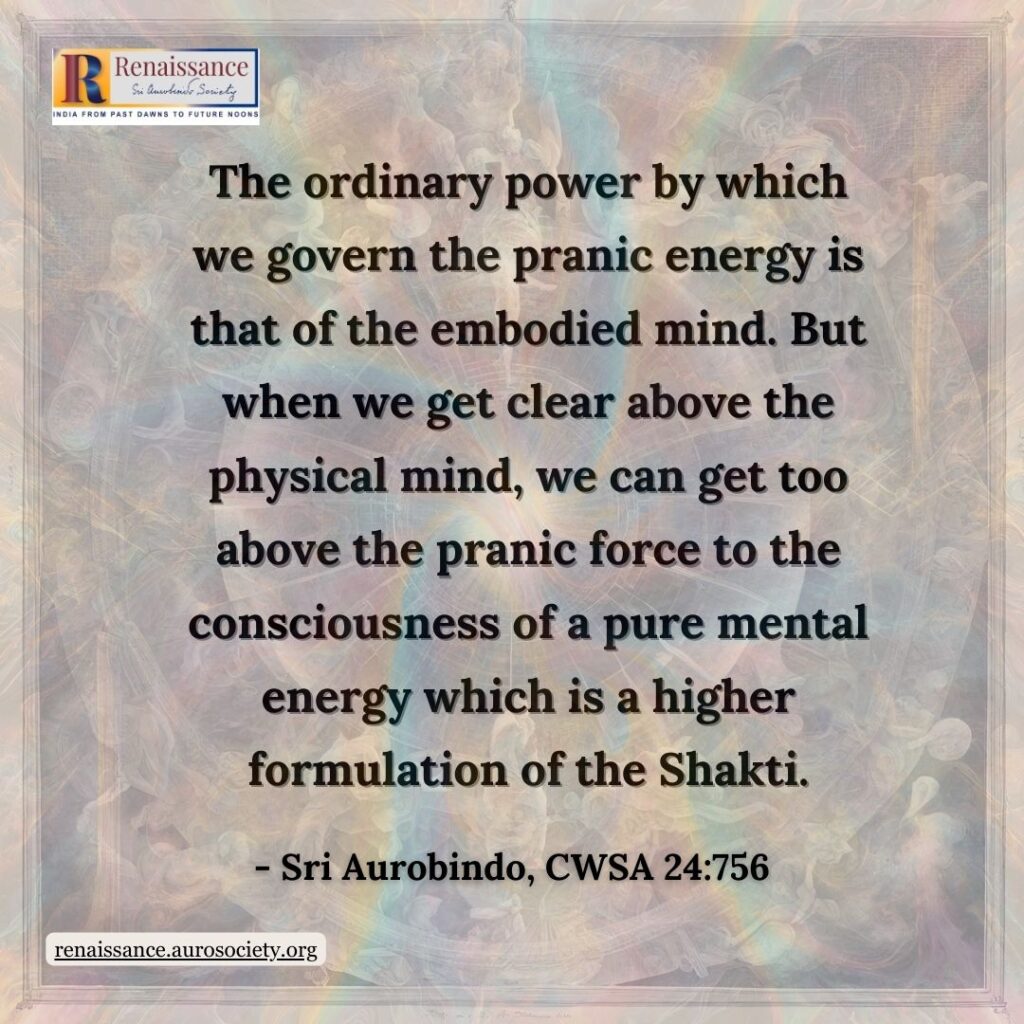
There we are aware of a universal mind consciousness closely associated with this energy in, around and above us,—above, that is to say, the level of our ordinary mind status,—giving all the substance and shaping all the forms of our will and knowledge and of the psychic element in our impulses and emotions.
This mind force can be made to act upon the pranic energy and can impose upon it the influence, colour, shape, character, direction of our ideas, our knowledge, our more enlightened volition and thus more effectively bring our life and vital being into harmony with our higher powers of being, ideals and spiritual aspirations.
Mixed up
In our ordinary state these two, the mental and the pranic being and energies, are very much mixed up and run into each other, and we are not able clearly to distinguish them or get a full hold of the one on the other and so control effectively the lower by the higher and more understanding principle.
But when we take our station above the physical mind, we are able then to separate clearly the two forms of energy, the two levels of our being, disentangle their action and act with a clearer and more potent self-knowledge and an enlightened and a purer will-power.
Nevertheless the control is not complete, spontaneous, sovereign so long as we work with the mind as our chief guiding and controlling force.
The mental energy we find to be itself derivative, a lower and limiting power of the conscious spirit which acts only by isolated and combined seeings, imperfect and incomplete half-lights which we take for full and adequate light, and with a disparity between the idea and knowledge and the effective will-power. And we are aware soon of a far higher power of the Spirit and its Shakti concealed or above, superconscient to mind or partially acting through the mind, of which all this is an inferior derivation.
CONTINUED IN PART 2
~ Sri Aurobindo, CWSA, Vol. 24, pp.752-761

~ Design: Satya

